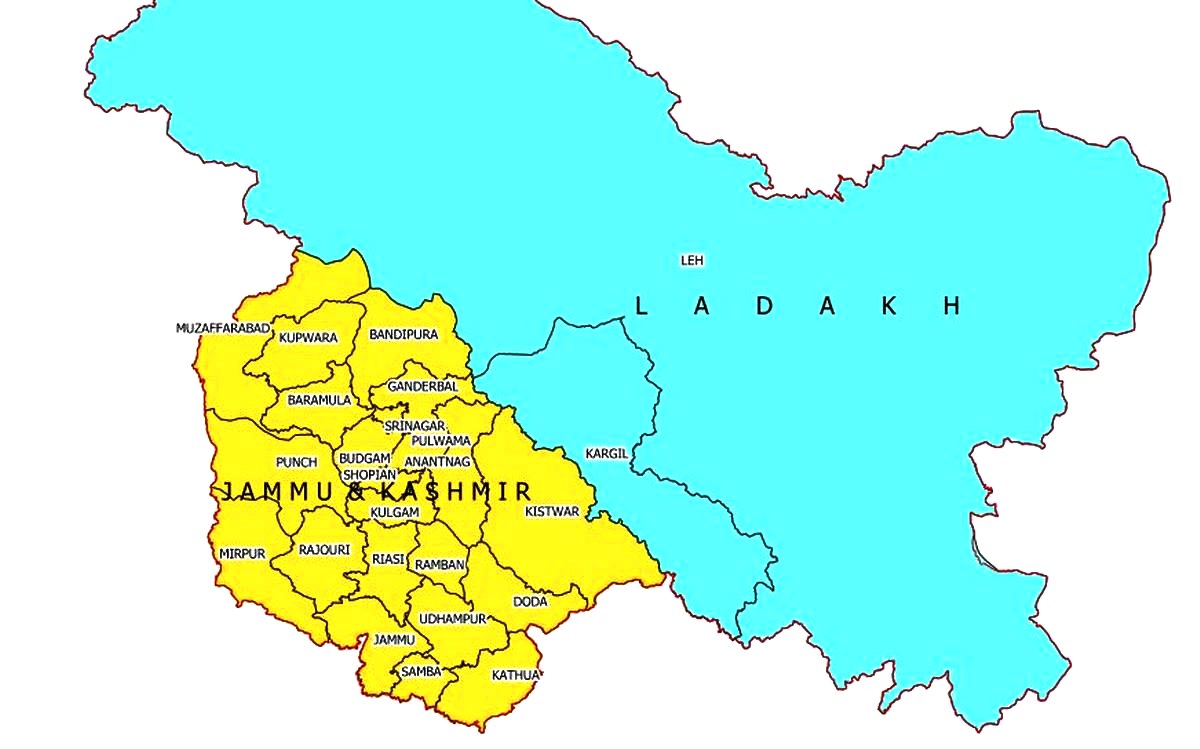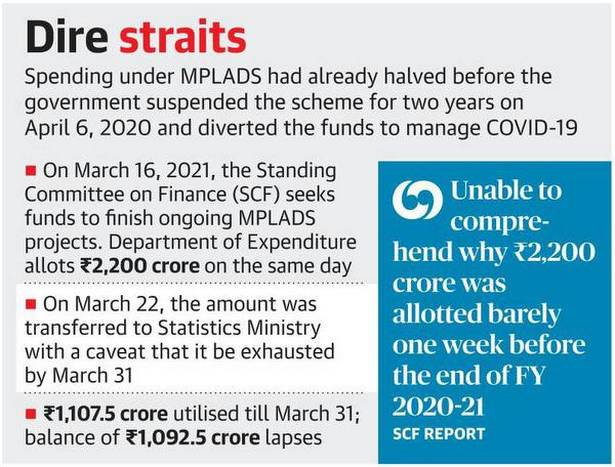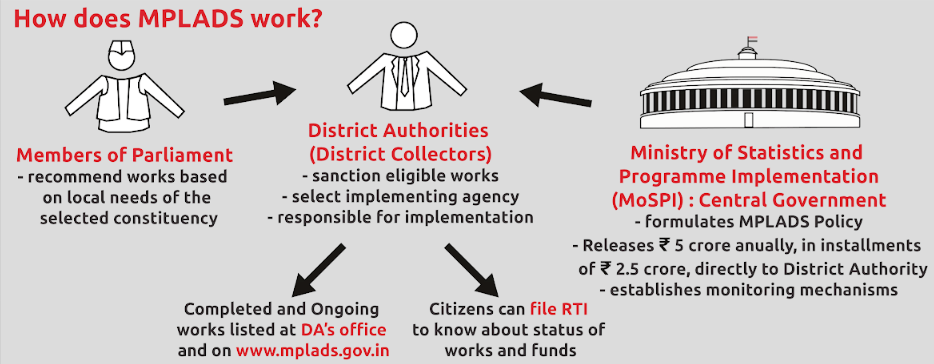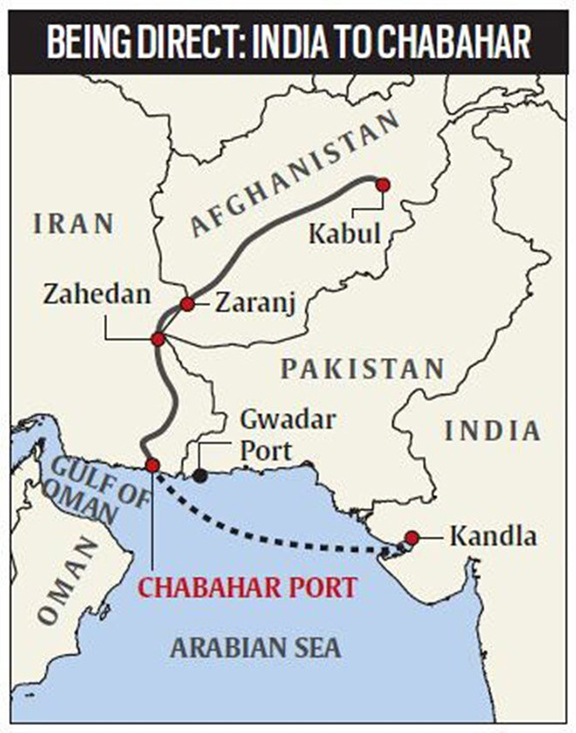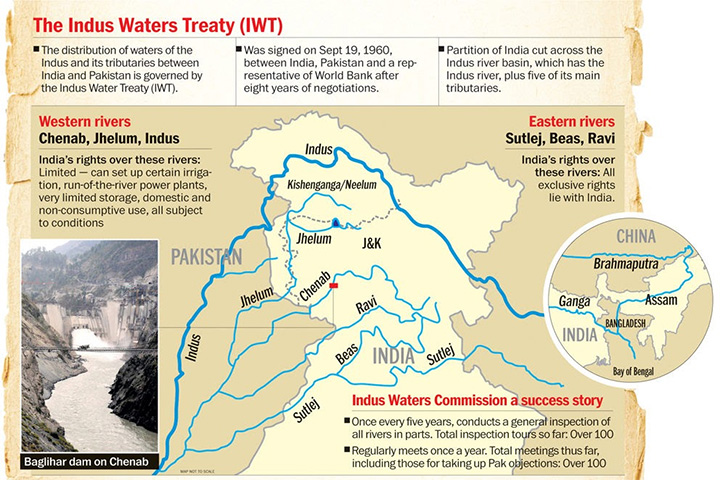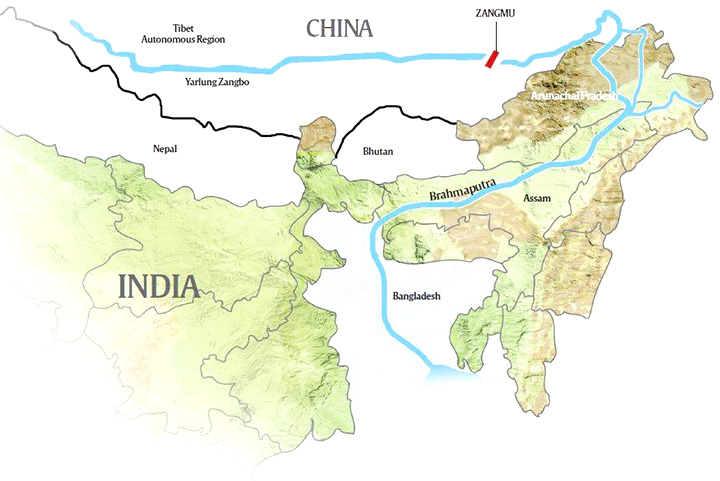Governance
Second Anniversary of Special Status Revocation: J&K
Why in News
The Forum for Human Rights in J&K (FHRJK) released its report a day ahead of Jammu and Kashmir (J&K) completing two years as Union Territory.
- The report raised concerns about the militancy that continues to remain a major challenge in J&K.
- FHRJK is an independent body co-chaired by former Supreme Court judge Justice Madan B. Lokur and former Kashmir interlocutor Radha Kumar.
Key Points
- Background:
- On 5 August 2019, the government of India revoked the special constitutional status of the erstwhile state of Jammu and Kashmir under Article 370 of the Constitution, and abrogated Article 35A.
- Article 35A had allowed J&K to define who its ‘permanent residents’ are and what rights and privileges are attached to such residency.
- The former state was bifurcated into the Union Territories of Ladakh (without a legislature) and Jammu-Kashmir (with a legislature).
- Concurrently, the Indian government imposed a near-total telecommunications lockdown in the region, detained political leaders and dissidents, and enforced Section 144 of the Indian Penal Code to prevent violent unrest.
- On 5 August 2019, the government of India revoked the special constitutional status of the erstwhile state of Jammu and Kashmir under Article 370 of the Constitution, and abrogated Article 35A.
- Findings from the Report:
- The reports raised concerns regarding human rights abuses, arbitrary detentions, prohibition on assembly and censorship on local media houses in J&K.
- The government has taken several positive steps, but they fell short of expectations.
- It also held that the counter-insurgency concerns continue to be given priority over public, civilian and human security.
- Reasons for Militancy in J&K:
- Since the special constitutional position of Jammu and Kashmir (J&K’s) under Article 370 was ended and it was divided into two UTs of J&K and Ladakh, a section of people in J&K has been protesting against the decision.
- Further, allowing Indian citizens to buy land in Jammu and Kashmir (J&K) without being a domicile, has angered the local people.
- Following this the militancy in the J&K, aided by cross-border support, continues to affect the region.
- This is coupled with misuse of draconian legislation, such as the Public Safety Act (PSA) and the Unlawful Activities Prevention Act (UAPA).
- Furthermore, there are growing fears that the Taliban takeover of Afghanistan is likely to further deteriorate the security conditions.
- Since the special constitutional position of Jammu and Kashmir (J&K’s) under Article 370 was ended and it was divided into two UTs of J&K and Ladakh, a section of people in J&K has been protesting against the decision.
- Steps Taken by Government & Judiciary:
- Promoting Industrial Development: Recently, the Department for Promotion of Industry and Internal Trade has notified New Central Sector Scheme for industrial development of Jammu and Kashmir.
- The scheme offers four incentives namely:
- Capital Investment Incentive,
- Capital Interest subvention,
- Goods & Service Tax Linked Incentive
- Working Capital Interest Subvention.
- The Scheme will help in creation of more employment opportunities and promotion of tourism in the region.
- The scheme offers four incentives namely:
- AB-PMJAY SEHAT Scheme: The Scheme provides free of cost insurance cover. It provides financial cover upto Rs. 5 lakh per family on a floater basis to all residents of the UT of J&K.
- Ceasefire Agreement: Indian and Pakistani Directors-General of Military Operations (DGMOs) agreed for restricted infiltration by armed groups and raised hopes that a wider peace process might follow.
- Elections in J&K: The Union government sought to conduct elections in J&K.
- However, the government held that the elections would be held for a UT assembly. On the contrary, regional parties are of the view that they will participate in the election, after statehood to J&K has been reinstated.
- Supreme Court Verdict on Internet Shutdown: The Supreme Court gave a judgement in response to petitions filed, arguing the Internet shutdown and curbing of other civil liberties in the J&K.
- The court held that suspension could be done for temporary duration only and the same is subject to judicial review.
- Special Package for J&K and Ladakh under Deendayal Antyodaya Yojana-National Rural Livelihood Mission.
- Promoting Industrial Development: Recently, the Department for Promotion of Industry and Internal Trade has notified New Central Sector Scheme for industrial development of Jammu and Kashmir.
Way Forward
- The Human rights forum recommended release of all remaining political detainees and repeal of the PSA and other preventive detention legislation.
- It also called for involvement of local communities in facilitating the return of Kashmiri Pandits.
- Peace framework in J&K can be established by implementing the vision of former Prime Minister of India (Atal Bihari Vajpayee) - Kashmiriyat, Insaniyat, Jamhooriyat (inclusive culture of Kashmir, humanitarianism and democracy) for Kashmir solution.
Governance
Samagra Shiksha Scheme 2.0
Why in News
The Cabinet Committee on Economic Affairs has approved the school education programme Samagra Shiksha Scheme 2.0 till the 2025-26 financial year.
- It has been upgraded to align it with the Sustainable Development Goal for Education and the new National Education Policy launched in 2020.
Key Points
- About Samagra Shiksha Scheme:
- It is an integrated scheme for school education covering the entire gamut from pre-school to class XII.
- It aims to deliver inclusive, equitable, and affordable school education.
- It subsumes the three Schemes of Sarva Shiksha Abhiyan (SSA), Rashtriya Madhyamik Shiksha Abhiyan (RMSA) and Teacher Education (TE).
- The scheme covers 1.16 million schools, over 156 million students and 5.7 million Teachers of Govt. and Aided schools (from pre-primary to senior secondary level).
- It is being implemented as a centrally sponsored scheme. It involves a 60:40 split in funding between the Centre and most States. It was launched by the Ministry of Education in 2018.
- About Samagra Shiksha Scheme 2.0:
- Direct Benefit Transfer (DBT):
- In order to enhance the direct outreach of the scheme, all child-centric interventions will be provided directly to the students through DBT mode on an IT-based platform over a period of time.
- This DBT would include RTE (Right to Education) entitlements such as textbooks, uniforms and transport allowance.
- On NEP Recommendations:
- Encouraging Indian languages:
- It has a new component for appointment of language teachers, which includes salaries, and training costs as well as bilingual books and teaching learning material as recommended in NEP.
- Pre-primary Education:
- It will now include funding to support pre-primary sections at government schools, i.e. for teaching and learning materials, indigenous toys and games and play-based activities.
- Master trainers for pre-primary teachers and anganwadi workers will be supported under the scheme.
- NIPUN Bharat Initiative:
- Under this initiative, an annual provision of Rs. 500 per child for learning materials, Rs. 150 per teacher for manuals and resources and Rs. 10-20 lakh per district will be given for assessment for foundational literacy and numeracy.
- On Digital Initiatives:
- There is a provision for ICT labs and smart classrooms, including support for digital boards, virtual classrooms and DTH channels which have become more important in the wake of the Covid-19 pandemic.
- For out-of-school children:
- It includes a provision to support out of school children from age 16 to 19 with funding of Rs. 2000 per grade to complete their education via open schooling.
- There will also be a greater focus on skills and vocational education, both for students in school and dropouts.
- Encouraging Indian languages:
- Other Features:
- Financial support for State Commission for Protection of Child Rights @ Rs 50 per elementary school in the state, for protection of child rights and safety.
- Holistic, 360-degree, multi-dimensional reports showing progress/uniqueness of each learner in the cognitive, affective, and psychomotor domains will be introduced in the form of Holistic Progress Card (HPC).
- Support for activities of PARAKH, a national assessment centre (Performance, Assessments, Review and Analysis of Knowledge for Holistic Development)
- Additional Sports grant of upto Rs. 25000 to schools in case at least 2 students of that school win a medal in Khelo India school games at the National level.
- Provision for Bagless days, school complexes, internships with local artisans, curriculum and pedagogical reforms etc included.
- Support for Social Audit covering 20% of schools per year so that all schools are covered in a period of Five years.
- Direct Benefit Transfer (DBT):
Governance
Funds Lapsed in MPLADS
Why in News
Recently, the Standing Committee on Finance has criticised the decision of the Ministry of Finance (Department of Expenditure) for giving barely a week’s time to the Ministry of Statistics and Programme Implementation (MoSPI) for funding ongoing Member of Parliament Local Area Development Scheme (MPLADS) projects, owing to which 50% funds lapsed.
Key Points
- Findings of the Committee:
- Impact on the Projects: The resultant funding crunch would have hit several local area development projects under implementation across the country.
- Especially in the States that went to polls this year as no funds were released for these States and constituencies citing the Model Code of Conduct.
- Ad-hocism in Policy: Under MPLADs, funds released to district authorities are not lapsable, while funds not released by the government in a particular year are carried forward.
- However, the decision of the Ministry of Finance that made funds lapseble, constitutes ad-hocism and a serious lapse in fiscal management with negative consequences for communities across India.
- Impact on the Projects: The resultant funding crunch would have hit several local area development projects under implementation across the country.
- About the MPLAD Scheme:
- MPLAD is a Central Sector Scheme which was announced in December 1993.
- The objective of the scheme is to enable the Members of Parliament (MP) to suggest and execute developmental works of capital nature based on locally felt needs with emphasis on creation of durable assets.
- Initially, it came under the control of the Ministry of Rural Development. Later, in October 1994, it was transferred to the Ministry of Statistics and Programme Implementation.
- Functioning:
- Each MP is granted Rs. 5 crore under the scheme, adding up to Rs. 3,950 crore a year for 790 MPs, to undertake development projects in their respective constituencies.
- Lok Sabha MPs have to recommend the district authorities projects in their Lok Sabha constituencies.
- Rajya Sabha MPs have to spend it in the state that has elected them to the House.
- Nominated Members of both the Rajya Sabha and Lok Sabha can recommend works anywhere in the country.
- Priority Projects:
- The projects include asset building such as drinking water facilities, primary education, public health sanitation and roads.
- Since June 2016, the MPLAD funds can also be used for implementation of the schemes such as Swachh Bharat Abhiyan, Accessible India Campaign (Sugamya Bharat Abhiyan), conservation of water through rain water harvesting and Sansad Aadarsh Gram Yojana, etc.
- Other Issues Related to MPLADS:
- Implementation Lapses: The Comptroller and Auditor-General of India (CAG) has flagged instances of financial mismanagement and artificial inflation of amounts spent.
- No Statutory Backing: The scheme is not governed by any statutory law and is subject to the whims and fancies of the government of the day.
- Monitoring and Regulation: The scheme was launched for promoting participatory development but there is no indicator available to measure level of participation.
- Breach of Federalism: Union Government can incur expenditure only with respect to matters over which it has subject domain as per seventh schedule.
- MPLADS encroaches upon the domain of local self governing institutions and thereby violates Part IX and IX-A of the Constitution.
- Conflict with Doctrine of Separation of Powers: The Scheme disturbs the scheme of separation of powers under the Constitution, as MPs are getting involved in executive functions.
Governance
Major Administrative Reforms
Why in News
Recently, the Union Government gave the information on Major Administrative Reforms which were introduced in recent years and emphasised the importance of these reforms in making governance more accessible.
- These reforms aim to encourage greater efficiency, transparent and corruption free governance, accountability and reduce scope for discretion. The Government follows the maxim “Minimum Government - Maximum Governance”.
Key Points
- Mission Karmayogi:
- This is a National Programme for Civil Services Capacity Building (NPCSCB). It is a comprehensive reform of the capacity building apparatus at individual, institutional and process levels for efficient public service delivery.
- It is aimed at building a future-ready civil service with the right attitude, skills and knowledge, aligned to the vision of New India.
- The capacity building will be delivered through iGOT-Karmayogi digital platform, with content drawn from global best practices.
- Lateral Entry:
- Lateral entry means when personnel from the private sector are selected to an administrative post of the government despite them not being selected in or being part of a bureaucratic setup.
- This is significant because contemporary times require highly skilled and motivated individuals at the helm of administrative affairs, without which public service delivery mechanisms do not work smoothly.
- Lateral Entry helps in bringing the values of economy, efficiency, and effectiveness in the Government sector. It will help in building a culture of performance within the Government sector.
- e-Samiksha:
- A real time online system for monitoring and follow up action on the decisions taken by the Government at the Apex level in respect of implementation of important Government programmes/projects.
- It is a digital monitor for bureaucracy to rein in slackers.
- Also, the government has been taking an intensive review for weeding out inefficient and Officers of doubtful integrity by premature retirement.
- e-Office:
- e-Office Mission Mode Project (MMP) has been strengthened for enabling Ministries/Departments to switch over to paperless office and efficient decision making.
- Citizen Charters:
- Government has mandated Citizen Charters for all Ministries/Departments which are updated and reviewed on a regular basis.
- It is a written document that spells out the service provider’s efforts taken to focus on their commitment towards fulfilling the needs of the citizens/customers.
- Good Governance Index 2019:
- It assesses the Status of Governance and impact of various interventions taken up by the State Government and Union Territories (UTs).
- The objectives of GGI are to provide quantifiable data to compare the state of governance in all States and UTs, enable States and UTs to formulate and implement suitable strategies for improving governance and shift to result oriented approaches and administration.
- It has been launched by the Ministry of Personnel, Public Grievances & Pensions.
- National Conference on e-Governance:
- It provides a platform for the government to engage with experts, intellectuals from industry and academic institutions to exchange experiences relating to e-Governance initiatives.
- In 2020, the 23rd National Conference on e-Governance was organised by the Department of Administrative Reforms and Public Grievances (DARPG) along with the Ministry of Electronics and Information Technology (MeitY) in Mumbai.
- Centralized Public Grievance Redress and Monitoring System (CPGRAMS):
- It is an online web-enabled system developed by National Informatics Centre (Ministry of Electronics & IT [MeitY]), in association with Directorate of Public Grievances (DPG) and Department of Administrative Reforms and Public Grievances (DARPG).
- The CPGRAMS provides the facility to lodge a grievance online from any geographical location. It enables the citizen to track online the grievance being followed up with Departments concerned and also enables DARPG to monitor the grievance.
- National e-Governance Service Delivery Assessment: It aims at assessing the States, UTs and Central Ministries on the efficiency of e-Governance service delivery.
- Comprehensive restructuring of the Scheme for ‘Prime Minister’s Awards for Excellence in Public Administration’ in 2014 and thereafter in 2020.
Administrative Reforms Commission
- The ARC is set up by the Government of India to review the public administration system and give recommendations to improve it.
- The first ARC (1966) was headed by Morarji Desai initially and later by K. Hanumanthaiah. The second ARC constituted in 2005 was chaired by Veerappa Moily.
Way Forward
- Reforms are an obvious response to the new challenges confronting the state institution managing public affairs; what lies at the root of such an exercise is the effort to enhance administrative capability in the changed scenario.
- Since the civil servants are accountable to political executives and that results in politicisation of civil services, the focus must be on external accountability mechanisms like citizen charters, social audits and encouraging outcome orientation among civil servants.
- Civil servants should provide unbiased, rational and meritorious suggestions to the political executive in policy formulation. It requires an impartial Civil Services Board that can look after all the aspects related to promotions, transfers, posting and suspensions.
Governance
Constitutional (127th) Amendment Bill, 2021
Why in News
The Government is planning to bring a Bill to Parliament to clarify “some provisions in the 102nd Constitutional amendment Bill” to restore the power of the states to identify backward classes.
- In India, separate OBC lists are drawn up by the Centre and each state concerned. Articles 15(4), 15(5) and 16(4) expressly conferred power on a state to identify and declare the list of socially and educationally backward classes.
Key Points
- Background:
- The amendment was necessitated after the Supreme Court in its ruling earlier this year upheld the 102nd constitutional amendment but said the President, based on the recommendations of the National Commission for Backward Classes (NCBC), would determine which communities would be included on the state OBC list.
- The 102nd Constitution Amendment Act of 2018 inserted Articles 338B and Article 342A (with two clauses) after Article 342.
- Articles 338B deals with the structure, duties and powers of the National Commission for Backward Classes.
- Article 342A says that the President, in consultation with the governor, would specify the socially and educationally backward classes.
- The 102nd Constitution Amendment Act of 2018 inserted Articles 338B and Article 342A (with two clauses) after Article 342.
- The ruling struck down the Maratha quota introduced by the Maharashtra government - a politically potent issue in the state.
- The amendment was necessitated after the Supreme Court in its ruling earlier this year upheld the 102nd constitutional amendment but said the President, based on the recommendations of the National Commission for Backward Classes (NCBC), would determine which communities would be included on the state OBC list.
- About the Bill:
- It will amend clauses 1 and 2 of Article 342A and also introduce a new clause 3.
- The bill will also amend the Articles 366 (26c) and 338B (9).
- It is designed to clarify that the states can maintain the "state list" of OBCs as was the system before the Supreme Court judgement.
- Articles 366 (26c) defines socially and educationally backward classes.
- The "state list" will be completely taken out of the ambit of the President and will be notified by the state assembly.
- Other Developments on OBCs:
- Some MPs have raised the issue of defining Creamy Layer in the ongoing Monsoon Session of Parliament.
- Further, the Justice Rohini committee is considering the sub-categorization of OBC quota and if any particular community or group of communities are benefiting most from the OBC quota and how to iron out anomalies.
- The Union Health Ministry has announced 27% reservation for the Other Backward Classes (OBCs) and 10% quota for the Economically Weaker Sections (EWS) in the All India Quota (AIQ) scheme for undergraduate (UG) and postgraduate (PG) medical/dental courses from 2021-22 onwards.
- Some MPs have raised the issue of defining Creamy Layer in the ongoing Monsoon Session of Parliament.
Constitution Amendment Bills
- As per the procedure laid down in the Constitution, Constitution Amendment Bills can be of three types viz.
- requiring a simple majority for their passage in each House.
- requiring special majority for their passage in each House i.e., a majority of the total membership of a House and by a majority of not less than two-thirds of the members of that House present and voting (article 368).
- requiring special majority for their passage and ratification by Legislatures of not less than one-half of the States by resolutions to that effect passed by those Legislatures (proviso to clause (2) of article 368).
- A Constitution Amendment Bill under article 368 can be introduced in either House of Parliament and has to be passed by each House by special majority.
- There is no provision of joint sittings on a Money Bill or a Constitution Amending Bill.
Way Forward
- The Amendment is found necessary to restore the powers of the state governments to maintain state list of OBCs which was taken away by a Supreme Court interpretation.
- If the state list was abolished, nearly 671 OBC communities would have lost access to reservation in educational institutions and in appointments.
- That would have adversely impacted nearly one-fifth of the total OBC communities.
- We cannot have such Central oversight. It allows states to respond to socio-economic requirements which are specific to a state or region, faster.
- Besides India has a federal structure and to maintain that structure, this amendment was essential.
International Relations
External Affairs Minister’s Visit to Iran
Why in News
India’s External Affairs Minister (EAM) visited Iran to attend the swearing-in ceremony of new Iranian President Ebrahim Raisi. This marks a landmark event attempting to reset the ties with Iran that have been under strain in recent times.
- This is EAM’s second visit in a month and it comes amid a sharp escalation of the fighting in Afghanistan between the Taliban and the Afghan security forces.
Key Points
- Importance of Iran for India:
- Geo-strategic Outreach: India views Iran as key to access land-locked Afghanistan and Central Asia through Chabahar Port.
- Iran’s geographical position is paramount to India’s geopolitical outreach, especially to Central Asia, a rich reservoir of natural resources.
- Similarly, Iran is vital for India’s access to Afghanistan in which India has immense strategic and security interests.
- Further, India has been developing the Chabahar port in a bid to bypass the impediments placed by Pakistan in the way of its attempts to trade with Afghanistan.
- Energy Security: Iran, one of the richest countries in hydrocarbons and India, a rapidly growing economy with a deep thirst for energy - make them natural partners.
- Geo-strategic Outreach: India views Iran as key to access land-locked Afghanistan and Central Asia through Chabahar Port.
- Significance of the Visit:
- Reasons for Tussle in India-Iran Relationship:
- India cancelling oil imports from Iran due to US sanctions.
- Slow progress in Chabahar port.
- Tussle over Farzad-B Gas Field.
- Iranian comments on Kashmir over the past few years.
- Security Concerns Emanating From Afghanistan: Visit comes amidst rapid developments in Afghanistan, with the US completing the pull-out of troops and the Taliban increasing its attacks on Afghan cities.
- The rapid advance of Taliban concerns both India and Iran.
- Given this context, and common interests, it is necessary for India and Iran to cooperate more closely, particularly on Afghanistan.
- Reasons for Tussle in India-Iran Relationship:
- Associated Challenges:
- India’s Exclusion in Afgan Peace Process: Another “Troika plus” meeting, the U.S.-Russia-China-Pakistan grouping on Afghanistan peace process, is going to be held in Doha.
- However, India and Iran, which are two regional powers, are being left out.
- Persisting Sanctions on Iran: Despite campaign promises to reverse the Donald Trump policy on Iran, US President Joe Biden’s administration is yet to withdraw most of the additional sanctions placed in 2017-2018.
- India’s Exclusion in Afgan Peace Process: Another “Troika plus” meeting, the U.S.-Russia-China-Pakistan grouping on Afghanistan peace process, is going to be held in Doha.
Way Forward
- India has proposed to include the Chabahar port in the framework of the International North South Transport Corridor.
- In this context, the formation of India-Uzbekistan-Iran-Afghanistan Quadrilateral Working Group on the joint use of Chabahar port is a welcome development.
- India needs to balance its ties with Iran on one side and the US along with its allies like Saudi Arabia and Israel, on the other.
Governance
Report on Water Resource Management
Why in News
Recently, a report was tabled in Rajya Sabha by the Standing Committee on Water Resources.
- The report is titled “Flood Management in the Country including International Water Treaties in the field of Water Resource Management with particular reference to Treaty/Agreement entered into with China, Pakistan and Bhutan”.
- The Government of India should renegotiate the Indus Water Treaty of 1960 with Pakistan in the light of present-day challenges such as climate change and constantly monitor ‘Chinese actions’ over Brahmaputra.
Key Points
- On Flood Management:
- The committee recommended setting up of a permanent institutional structure in the form of National Integrated Flood Management Group under the chairmanship of the Minister of Jal Shakti “immediately” for control and management of floods in the country.
- This group should take up the overall responsibility of coordination as well as building synergies between all agencies responsible for management of floods and their consequences on life and property.
- On Indus Water Treaty:
- Highlighted Impacts of Climate Change:
- Rainfall Pattern: There are instances of more high-intensity rainfall as well as long stretches where there is low rainfall.
- Glacial Melt: The contribution of glaciers in the Indus basin is higher than in the Ganges or Brahmaputra basins.
- Disasters: Because there is a fragile Himalayan region involved, there is greater frequency of landslides and flash floods.
- Utilisation of the Waters of the Indus:
- India was able to make full use of the ‘Eastern Rivers’, namely the Ravi, Beas and Satluj through a series of dams such as Ranjit Sagar on the Ravi in Pathankot, Pong on the Beas and Bhakra Nangal on the Satluj.
- However, canals in Punjab and Rajasthan such as the Rajasthan Feeder and the Sirhind Feeder had become old and were not maintained properly. This had resulted in the lowering of their water carrying capacity.
- Thus, the water from the Harike Barrage on the confluence of the Beas and Satluj in Punjab was usually released downstream into Pakistan.
- It urged the Centre to expedite new projects like the one on the Ujh, a tributary of the Ravi, as well as the Shahpurkandi on the Ravi itself to exploit the full potential of the rivers for irrigation and other purposes.
- It also recommended that the canal systems in Punjab and Rajasthan be repaired to increase their water carrying capacity.
- Renegotiation of Indus Water Treaty:
- Present day pressing issues such as climate change, global warming and environmental impact assessment etc. were not taken into account by the Treaty signed in 1960.
- There is a need to re-negotiate the Treaty so as to establish some kind of institutional structure or legislative framework to address the impact of climate change on water availability in the Indus basin and other challenges which are not covered under the Treaty.
- Highlighted Impacts of Climate Change:
- On China’s Development on Brahmaputra:
- Committee expressed apprehension that though ‘run of the river’ projects undertaken by China per se may not lead to diversion of waters, but there is every possibility that water can be stored in pondages and released for running the turbines.
- This may lead to certain diurnal variation in downstream flow and as a consequence have an impact on water flows in Brahmaputra river and thus affect India’s endeavours to tap the region’s water resources.
- Three hydropower projects on the main stream of Brahmaputra River in Tibet Autonomous Region have been approved by the Chinese authorities and a hydropower project at Zangmu was declared fully operational by Chinese authorities in October 2015.
- India should constantly monitor the Chinese actions so as to ensure that they do not pursue any major interventions on Brahmaputra river which would adversely affect our national interests.
- The committee expressed satisfaction at the fact that China is sharing hydrological data with regard to the Brahmaputra and Sutlej, though on payment basis.
- There is no water treaty between India and China at present.
- Committee expressed apprehension that though ‘run of the river’ projects undertaken by China per se may not lead to diversion of waters, but there is every possibility that water can be stored in pondages and released for running the turbines.
- Cooperation with Bhutan:
- A scheme titled “Comprehensive Scheme for Establishment of Hydro-meteorological and Flood Forecasting Network on rivers Common to India and Bhutan” is in operation.
- Rivers common to India and Bhutan include Manas river, Sankosh river, etc.
- The network consists of 32 Hydro-meteorological/meteorological stations located in Bhutan and being maintained by the Royal Government of Bhutan with funding from India. The data received from these stations are utilized in India for formulating flood forecasts.
- A Joint Group of Expert (JGE) on Flood Management has been constituted between India and Bhutan to discuss and assess the probable causes and effects of the recurring floods and erosion in the southern foothills of Bhutan and adjoining plains in India and recommend to both Governments appropriate and mutually acceptable remedial measures.
- A scheme titled “Comprehensive Scheme for Establishment of Hydro-meteorological and Flood Forecasting Network on rivers Common to India and Bhutan” is in operation.
Important Facts For Prelims
Plastic-Mixed Handmade Paper
Why in News
Recently, Khadi and Village Industries Commission (KVIC) has secured Patent registration for its innovative Plastic-mixed Handmade Paper developed to reduce plastic menace from nature.
Key Points
- The plastic-mixed handmade paper (which is recyclable and eco-friendly) was developed under Project REPLAN (REducing PLAstic from Nature).
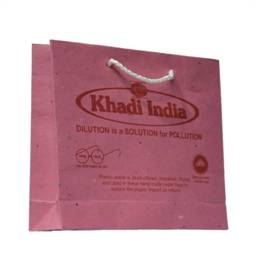
- The project was launched in September 2018 as part of KVIC’s commitment to Swachh Bharat Abhiyaan.
- It aims to make carry bags by mixing processed and treated plastic waste with cotton fibre rags in the ratio 20:80.
- This is the first of its kind project in India, where plastic waste is de-structured, degraded, diluted and used with paper pulp while making handmade paper and thus reduces plastic waste from nature.
- The invention is aligned with the Prime Minister’s call for fighting the menace of single-use plastic.
- The production of waste-plastic mixed handmade paper is likely to serve the twin objectives:
- Protecting the environment
- Creating sustainable employment
- The technology developed by KVIC uses both high & low density waste polythene that not only adds extra strength to the paper but also reduces the cost by up to 34%.
- KVIC has developed products such as carry bags, envelopes, files/folders, etc. using plastic mixed handmade paper.
Patent
- A Patent is a statutory right for an invention granted for a limited period of time to the patentee by the Government, in exchange of full disclosure of his invention for excluding others, from making, using, selling, importing the patented product or process for producing that product for those purposes without his consent.
- The term of every patent granted is 20 years from the date of filing of application.
- The patent system in India is governed by the Patents Act, 1970 as amended by the Patents (Amendment) Act, 2005 and the Patents Rules, 2003.
- The Patent Rules are regularly amended in consonance with the changing environment, most recent being in 2016.
- Patent protection is a territorial right and therefore it is effective only within the territory of India.
- There is no concept of global patent.
- Patents should be obtained in each country where the applicant requires protection of his invention.
Khadi and Village Industries Commission (KVIC)
- KVIC is a statutory body established under the Khadi and Village Industries Commission Act, 1956.
- The KVIC is charged with the planning, promotion, organisation and implementation of programmes for the development of Khadi and other village industries in the rural areas in coordination with other agencies engaged in rural development wherever necessary.
- It functions under the Ministry of Micro, Small and Medium Enterprises.
- Major initiatives Associated with KVIC:
Important Facts For Prelims
E-Prisons Project
Why in News
The Ministry of Home Affairs (MHA) has provided financial assistance of Rs. 99.49 crores to the States and Union Territories (UTs) for the E-Prisons Project.
- Also, acting on the request of the MHA, NIMHANS, an Institute of National Importance, has recently issued a set of guidelines on the management of mental health issues of the prisoners and prison staff.
Key Points
- About:
- This project aims at computerization of the functioning of prisons in the country. It has been operationalised in all States and Union Territories.
- e-Prisons data has been integrated with the Police and Court system under the Inter-operable Criminal Justice System.
- ePrisons application suite has been developed by National Informatics Centre (NIC), Ministry of Electronics & IT (MeitY).
- It has 3 components:
- e-Prison Management Information System (MIS): It is used at the prisons for their day to day regular activities.
- National Prisons Information Portal: It is a citizen centric portal showing statistical data of various prisons in the country.
- Kara Bazaar: Portal for showcasing and selling the products manufactured in various prisons of the country by inmates.
- Inter-operable Criminal Justice System:
- It is a common platform for information exchange and analytics of all the pillars of the criminal justice system comprising Police, Forensics, Prosecution, Courts, Prisons.
- Purpose: To reduce errors and time taken in sharing of necessary information between the pillars, which often lead to larger challenges like longer duration of trials, poorer convictions, transit losses of documents etc.
- Some other critical benefits arising out of the ICJS ecosystem are usable analytics products like the National Database on Sexual Offenders (NDSO) to identify & track repeat and habitual sexual offenders.
Prisons/'Persons detained therein'
- It is a State subject under Entry 4 of List II of the Seventh Schedule to the Constitution of India.
- Administration and management of prisons is the responsibility of respective State Governments.
- However, the Ministry of Home Affairs provides regular guidance and advice to States and UTs on various issues concerning prisons and prison inmates.
- The Supreme Court had in September 2018 appointed the Justice Roy Committee to examine the various problems plaguing prisons, from overcrowding to lack of legal advice to convicts to issues of remission and parole.

